The 10 most exquisite sacred forests in Japan
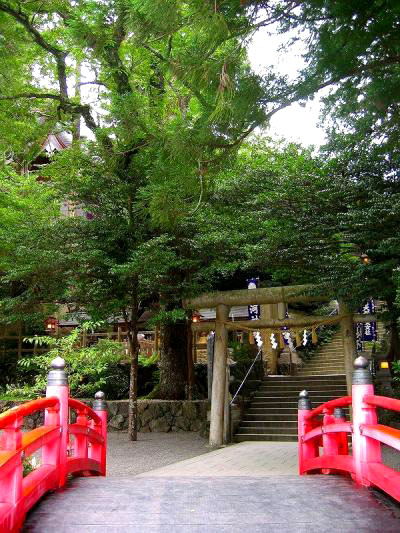
From the myriad sacred forests throughout Japan, we have selected the 10 most representative of the archipelago’s natural regions. These woodlands serve not only as objects of worship but also as precious places where people can purify their souls and refresh their spirits. Each presents a uniquely different habitat of flora and fauna.
Atsuta Jingu
熱田神宮
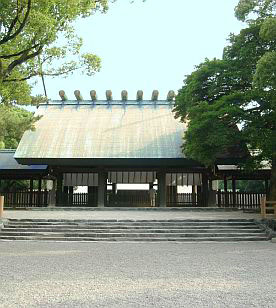
After Ise Jingu this is the most important center of Shinto worship. It enshrines the sacred sword Kusanagi-no-tsurugi, one of the three imperial regalia that were owned by successive emperors and used as symbols of succession to the throne. The 20-hectare forest consists mainly of broad-leafed evergreens such as sakaki (a kind of camellia), camphor, ilex, and Japanese honeysuckle. It even has a camphor tree over 1,000 years old. The historic shrine is a popular oasis in the midst of Nagoya’s urban sprawl.
Atsuta-jingu Shrine is also called “Atta-san” or “Miya.” It is very popular among the locals. Atsuta-jingu Shrine is a historic shrine that is mentioned in Japan’s oldest history book, the 7th century “Kojiki,” and has Kusanagi-no-Mitsurugi, one of the three heirlooms, “Sansyu-no-jingi,” owned by successive emperors and used as a symbol of succession to the imperial throne.
The precincts of the shrine are surrounded by a dense forest called Atsuta Forest. This forest gives the precincts a solemn atmosphere. The Treasury Hall inside the Bunka-den, a many-floored building constructed in 1966, stores approximately 4,000 treasures. Also inside the precincts, there are precious historic sites such as the Nobunaga-bei Wall dedicated by the 16th century general Oda Nobunaga, the Sakuma-tourou Lantern, and Nijugo-cho-bashi Bridge.
This shrine holds more than seventy ceremonies yearly, including traditional ones such as the E-youdo Ceremony, when shinto priests walk around laughing, which attract many visitors throughout the year.
1-1-1 Jingu, Atsuta-ku, Nagoya, Aichi / Tel. 052-671-4151
Shimogamo Jinja
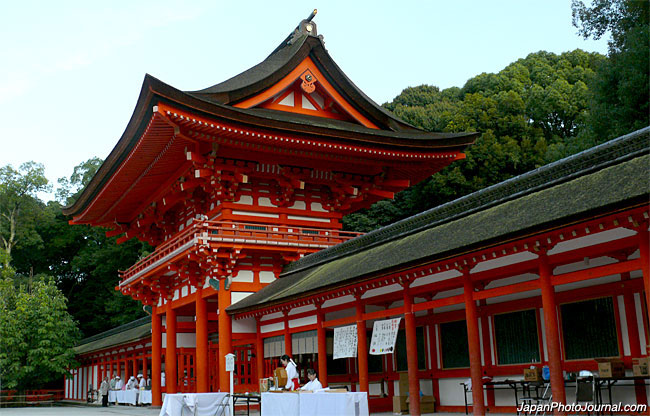
Its 53 structures, including the gateway of Romon and Buden Hall, have been designated Important Cultural Properties. The shrine is also known for its primeval forest Tadasu-no-mori, which has an area of about 12.4 hectares. Originally covering 495 hectares, the forest includes approximately 40 species of broad-leafed deciduous trees, including zelkova, elm, and hackberry, whose ages range from 200 to 600 years. This is the only place where visitors can see the original wilderness of the ancient Yamashiro area (today’s southern Kyoto prefecture).
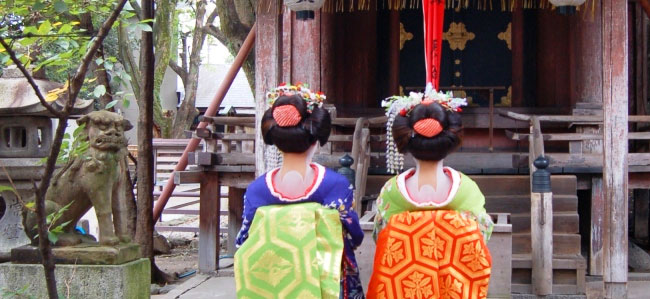
The world cultural heritage site of Shimogamo Shrine, is often described in The tale of Genji and other historical literature and believed to be first erected in 2 B.C. Breathe fresh air through the 124,000 square-meter shrine forest Tadasunomori where approximately 600 trees of some 40 species give the Kyotoites place to relax.
59 Shimogamoizumikawa-cho, Sakyo-ku, Kyoto / Tel. 075-781-0010
Yahiko Jinja
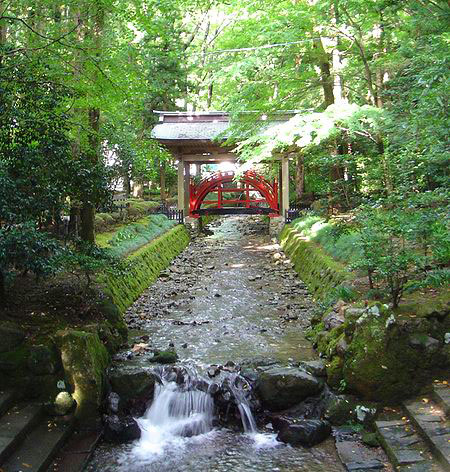
The supreme shrine in the Echigo region (now Niigata prefecture), Yahiko Jinja is cited in the Manyoshu (the oldest anthology of Japanese poetry). The shrine is located on Mount Yahiko (alt. 638 m), whose summit commands a panoramic view of the Sea of Japan. Revered as a sacred mountain with the divine power to protect people from evil, Yahiko-san is forested with cedar, cypress, and oak. It is now a popular site for open-air bathing among locals. A sacred chinquapin tree is enshrined in the holy precinct.
Yahiko, Yahiko-mura, Nishi-kanbara-gun, Niigata / Tel. 0256-94-2001
Kirishima Jingu
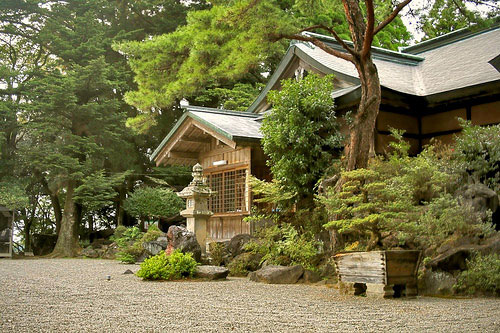
This shrine originated in the sixth century. Since 742 it has been destroyed more than 60 times by eruptions of volcanic Mount Kirishima on the border of Miyazaki and Kagoshima prefectures. Reconstructed in the present location in 1484, it sits amid an 887-hectare forest, 60 percent of which is primeval woodland. Located so close to the mountain, this forest is an ideal place to observe the process of forest recovery after volcanic activity.
2608-5 Taguchi, Kirishima-cho, Aira-gun, Kagoshima / Tel. 0995-57-0001
Kashima Jingu
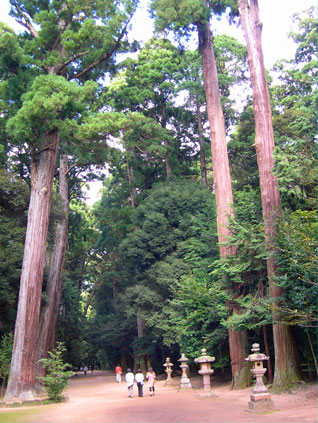
Believed to date from 660 BC, this supreme shrine of Hitachi province (now Ibaraki prefecture) is one of the three principal shrines in the Kanto region, along with Ikisu Shrine, also in Ibaraki, and Katori Shrine in Chiba prefecture. Kashima Jingu boasts 800 kinds of trees such as cedar, oak, chinquapin, and fir. One grove is designated a Natural Monument. Due to the richness of its native bird life, it has also been designated the Kashima Wildlife Protection Area.
2306-1 Kyuchu, Kashima, Ibaraki / Tel. 0299-82-1209
Kasuga Taisha
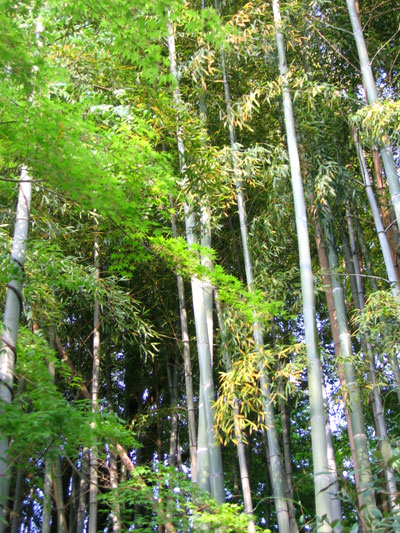
The beautiful forest of nagi (a kind of podocarpus) on Mount Mikasa is a most sacred forest. Here dwell the gods of Kasuga Taisha. It is a primeval forest of broad-leafed evergreens, where logging has been forbidden for more than a millennium. Some 100 kinds of trees and shrubs, including kasuga cedar, ichii oak, nagi, and andromeda, grow in the area, which was designated a World Heritage Site by UNESCO in 1998. Though trespassing is generally forbidden, pilgrimages to subordinate shrines scattered across the mountain are organized four times a year.
160 Kasugano-cho, Nara / Tel. 0742-22-7788
Tenkawa Jinja
天河大辨財天社
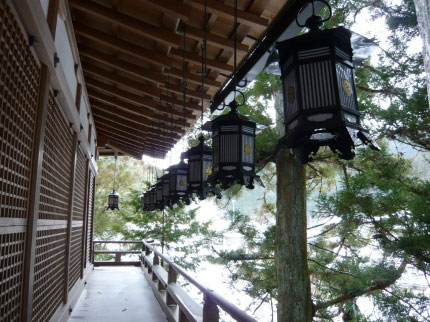
Located in the center of Japan’s spiritual heartland, the Kii Mountain range, this shrine is filled with sacred energy emanating from the dense forest on the holy mountain Omine-san. Since the shrine’s principal object of worship, sheltered at the top of Mount Misen (alt. 1,895 m), is Benzaiten, the goddess of music and fine arts, many artists regularly perform concerts dedicated to the spirit. These attract considerable attention.
107 Tsubonouchi, Tenkawa-mura, Yoshino-gun, Nara / Tel. 0747-63-0558
Seifa Utaki
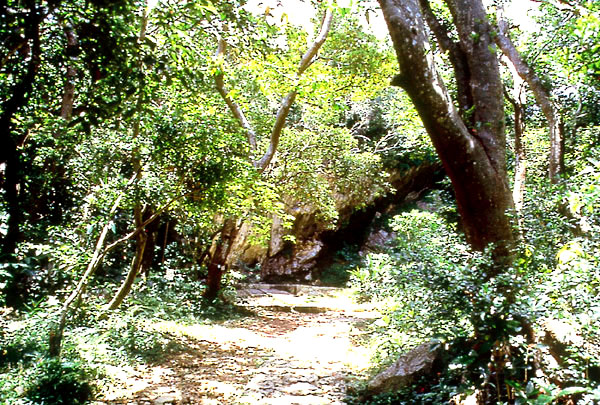
The holiest sanctuary of Rikyu Shinto (Okinawa’s indigenous religion based on animism), Seifa Utaki is a sacred grove where ancient gods are believed to have descended and dwelled. The sanctuary used to be closed, with the ordinary public forbidden even to pass through the gates. There are six places of worship within the precincts where you can see indigenous trees such as kubanoki (a kind of palm) and yabunikkei or Cinnamomum japonicum (wild cinnamon). The trianglular cavern, formed naturally by gigantic rocks, is the symbol of Seifa Utaki, designated a World Heritage Site by UNESCO in December 2000.
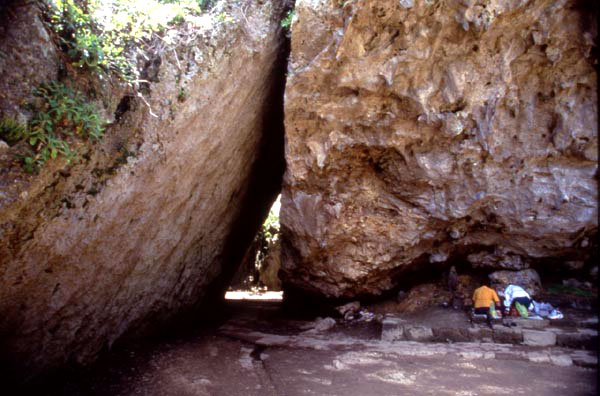
This is the most sacred site in Okinawa. A legend of the origin of the Ryukyus holds that the first of all gods, Tedako (god of the sun), ordered two gods to land on the islands and organize them as nations. The first thing they did during this process was to establish sacred sites, one of which was Seifa Utaki. Historically, most Ryukyuan gods have been female, and that’s why the Ryukyu people believed that only women had the power to protect their men. Accordingly, the sisters and aunts of a king were called Kikoe Ogimi, and Seifa Utaki is the place where the Kikoe Ogimi were enthroned. The kings also used to visit the site every year to pray for a rich harvest.
Sayahabaru, Kudeken, Chinen-son, Shimajiri-gun, Okinawa / Tel. 098-948-1149
Dewa Sanzan Jinja
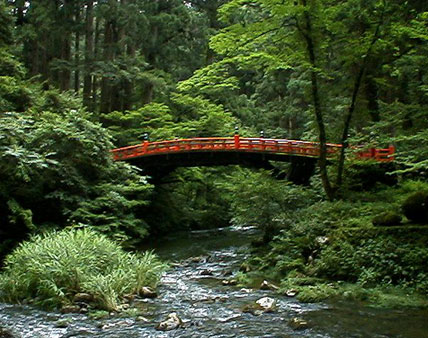
Commonly known as Dewa Sanzan Jinja (shrines of the three sacred mountains of Dewa), it consists of three separate shrines: Dewa Shrine atop Mount Haguro (alt. 414 m), Gassan Shrine on Mount Gassan (alt. 1,984 m), and Yudono-san Shrine halfway up Mount Yudono (alt. 1,504 m). The entire area covers 2,185 hectares. The 2-kilometer approach from the Zuishin Gateway up to the top is flanked on both sides with 300- to 600-year-old cedar trees. The solemn atmosphere is worth the name “sacred mountain.”
7 Toge, Toge-aza, Oaza – Haguro-machi, Higashi Tagawa-gun, Yamagata Tel. 0235-62-2355
Keta Taisha
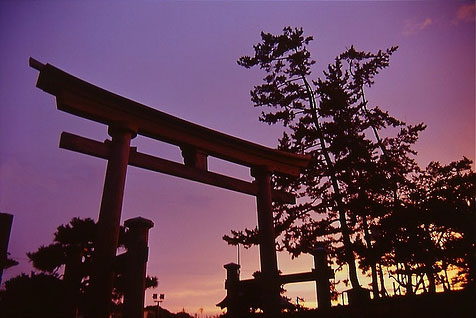
The main shrine of Noto province (now Ishikawa prefecture), Keta Taisha has its innermost sanctuary deep in a most sacred forest, designated a Natural Monument in 1967. Trespassing is strictly forbidden in the 3.3-hectare site, making the broad-leafed evergreen forest a paradise for not only 300- to 500-year-old trees, but also for plants such as Haplomitrium mnioides (a kind of moss) and Tremella samoensis (a kind of mushroom).
Jike-machi, Hakui, Ishikawa / Tel. 0767-22-0602
Source : int.kateigaho.com




